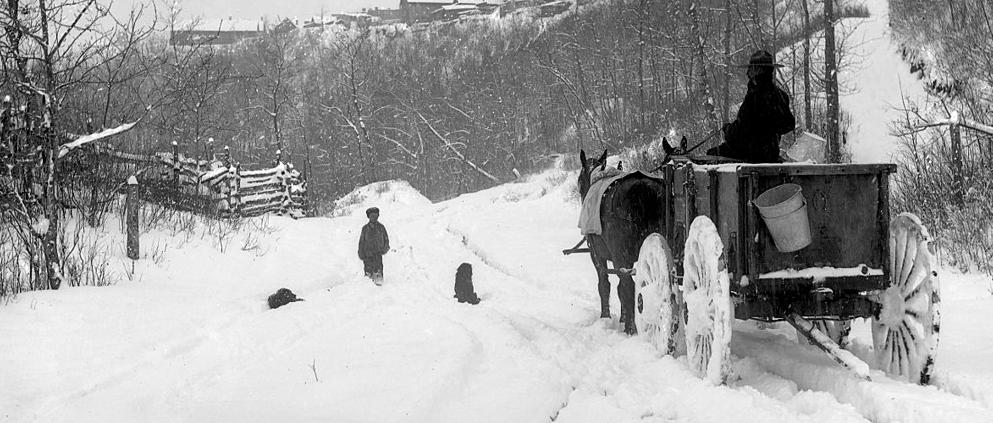You are here
Hands, Behinds and Shoes: Measuring Things in the Horse World

Following the History
The US standard railroad gauge (distance between the rails) is four feet, 8.5 inches. It’s an odd number.
Why use it as a standard gauge?
Because that's the way they built them in England. English expatriates built United States and Canadian railroads.
Why did the English build them like that? Because the first rail lines were built by the same people who built the pre-railroad tramways, and that’s the gauge they used.
Why did “they” use that gauge then? Because the people who built the tramways used the same jigs and tools that they used for building wagons, which used that wheel spacing.
Okay! Why did the wagons have that particular odd wheel spacing? Well, if they tried to use any other spacing, the wagon wheels would break on some of the old, long-distance roads in England, because that's the spacing of the wheel ruts.
So who built the old rutted roads? The first long distance roads in Europe (including England) were built by Imperial Rome for their legions. The roads have been used ever since.
And ruts in the roads? The initial ruts were formed by Roman war chariots, which everyone else had to match for fear of destroying their wagon wheels. Since the chariots were made for Imperial Rome, they were all alike in the matter of wheel spacing.
So the US standard railroad gauge of 4 feet, 8.5 inches derives from the original specification for an Imperial Roman war chariot. Specifications and bureaucracies live forever. The Imperial Roman war chariots were made just wide enough to accommodate the back ends of two warhorses — an answer to the original question.
A Modern Day Twist
Now a twist to the story:
When you see a space shuttle sitting on its launch pad, there are two big booster rockets attached to the sides of the main fuel tank. These are Solid Rocket Boosters, or SRBs. The SRBs are made by MortonThiokol at their factory in Utah. The engineers who designed the SRBs might have preferred to make them a bit fatter, but the SRBs had to be shipped by train from the factory to the launch site. The railroad line from the factory had to run through a tunnel in the mountains. The SRBs, therefore, had to fit through that tunnel. The tunnel is slightly wider than the railroad track, and the railroad track is about as wide as two horses’ behinds. So over two thousand years ago, the width of two horses' behinds turned out to be a major design feature of what is arguably the world's most advanced transportation system.
Hands: How Tall is a Horse?
A “Hand” is a unit of measure equal to four inches, used to measure the height of a horse at the highest point of the withers. The number of whole hands is properly followed by a period, then the remaining height in inches. Thus, a horse measuring five feet and two inches at the withers (62 inches) would be designated as 15.2 hands. The hand is a traditional unit in the UK, standardized at four inches by a statute of King Henry VIII in 1540. A hand approximates the width of a palm or clenched fist.
What Size of Shoe Fits?
Farriers use the following measurements (approximate) to determine the correct size. The width and length dimensions of the hoof are key measurements. Hoof shape also factors into the proper choice.
On a freshly trimmed hoof, use a ruler and measure the foot at its widest point to determine the width.
Then measure through the center of the foot from heel to toe to determine hoof length. Size 1: 5 1/2” or 139.7 mm wide; length - 5 5/8” or 144.2 mm
Size 0: 5” or 126 mm wide; length - 5 3/8” or 136.5 mm
Size 00: 4 3/4” or 120.7 mm wide; length - 5 1/8” or 130.2 mm
Size 000: 4 1/2” or 114.3 mm wide; length 4 5/8” or 119 mm
Article written by Dr. Ron Clarke
Image - Winter in Edmonton
